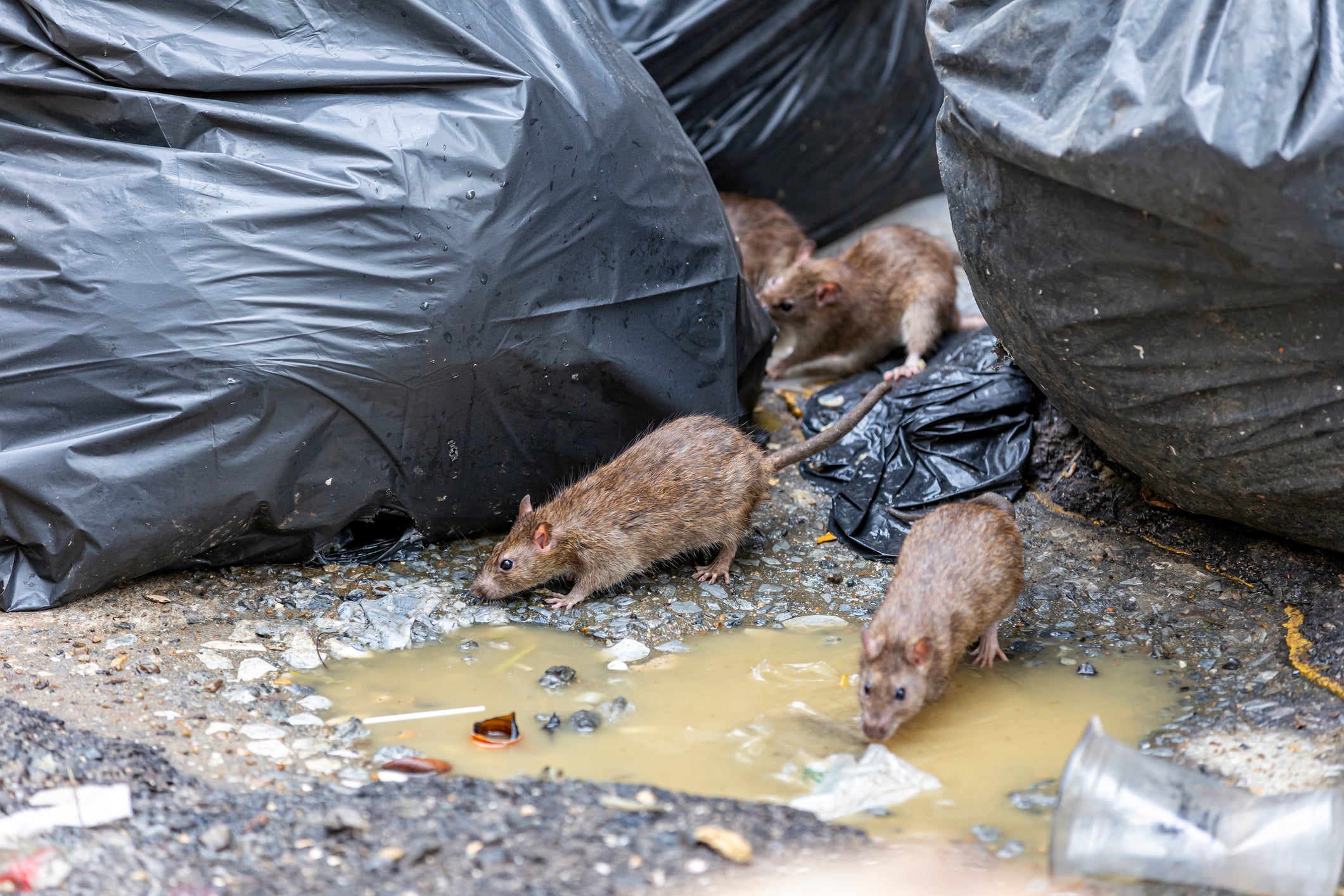Overflowing bins, leftover junk food and global warming could be causing rats in the UK to grow larger, experts have said.
A supersized 22-inch rat was captured in the Normanby area of Redcar and Cleveland after a resident called in exterminators.
But pest control catcher David Parnell said this huge rodent is not a one-off – he thinks the rats are getting bigger and harder to deal with.
Dr Steven Belmain, professor of ecology at the University of Greenwich, told The Independent that adult rats can weigh up to 600g. He said: “When they are well fed and mature, they can be 20 to 30cm long.”
Experts say these intelligent and adaptable creatures can grow to these colossal sizes if waste management is poor and food is left on the streets. They can even evolve more quickly than other mammals.
More food is available
Just like any animal, the more food they consume, the bigger they can grow – meaning rats are probably gorging themselves on our food waste.
Mihail Velev at Fantastic Pest Control told The Independent: “In urban areas, overflowing bins, food waste, poorly secured bird feed and even compost heaps provide a near-constant food supply.
“A rat with regular access to high-calorie food, especially high-protein scraps, will not only grow faster but can live longer and reach its full genetic potential in terms of size.”
These large rats are rarely found in urban environments, according to Dr Belmain. Instead, he has seen hefty rodents on farms where they can eat overspills of food given to livestock.
“It is perhaps a bit surprising to find them in urban environments of that size, it might allude to the fact that food is abundant. In the wild, it's a tougher life if you're really having to forage,” he said.

Overflowing bins and poorly maintained sewers
Poor waste management and litter in urban areas and city parks are attracting rodents and helping them thrive.
“People are being more careless with their litter, perhaps not putting it in the bins, in the summer there's always a lot of growth because people are out in parks having picnics or they're feeding the birds and there's more food being dropped on the ground,” Dr Belmain.
“It's really only when those bins are overflowing and people are not putting food in those kinds of protected environments that you could imagine rodents getting access to it,” he added.
Since the start of the Birmingham bin strikes in March, there have been reports of larger rats rummaging through the waste. Shadow chancellor of the Duchy of Lancaster, Alex Burghart, told MPs: “Rats the size of dachshunds are terrifying the local residents.”
And it’s not just dirty streets - weak sewer infrastructure has also been blamed for the emergence of larger rats in urban areas.
Pest control catcher David Parnell said rodents are not just passing through the sewers but climbing up into homes.
“I’ve had cases where rats have climbed two storeys up the inside of a cast iron drainpipe, only to emerge in someone’s toilet bowl,” he said.

Some rats are resistant to poison
Some rats are living longer because they survive chemical treatment that would have previously killed them.
“Resistance to certain rodenticides is becoming more common, particularly in parts of the UK like Yorkshire and the Midlands,” Mr Velev explained.
“This issue doesn't mean the rats are genetically mutated giants. It simply means some populations are surviving chemical treatments that would have controlled them in the past.
“These survivors reproduce and, over time, can grow larger simply because they're living longer and facing fewer environmental pressures.”
They can evolve more quickly than other mammals
Rats are “evolutionary winners” according to Jan Zalasiewicz, a palaeontologist at the University of Leicester.
He explained rats have a genetic make-up that means they can evolve quicker than the average mammal, which may have allowed them to survive and grow.
“They're intelligent, they're social and they're really adaptable, they evolved very quickly,” he told The Independent.
One way rats have adapted to survive is by evolving to be able to eat junk food.
Dr Zalasiewicz said: “Rats in some cities have been shown to evolve. They are changing the shape of their skulls and teeth to be better able to adapt to the kind of food they will get from humans as opposed to the food they get in the wild.”
“There's something which suggests that their genome is changing to help them adapt to junk food. So, to highly processed sugar-rich carbohydrate-rich food, which they'll have a lot of in cities, but of course not much of in the wild,” he added.
Climate change could create better conditions
Warmer weather could provide better conditions for rats, and they may even be evolving to survive.
Mild winters mean rats are less likely to die because of cold or lack of food, according to Mr Velev.
“When winters are mild and food remains available year-round, rats don't face the seasonal die-back that normally keeps populations and size averages in check,” he said.
Not only is the warmer weather helping them survive, but Dr Zalasiewicz said they could also be increasing in size to help them adapt to warmer weather.
He said: “There's something called Burgmann's rule, which suggests mammals get smaller as it gets warmer, because it's easier to remove heat with a bigger surface to volume ratio. But there are studies showing there are one or two animals which buck that trend, such as the Asian shrew, which actually got a little bit larger as the temperatures got warmer.”
Mapped: Worst areas for rat infestations in the UK as over half a million reported
‘One in four councils could lose money’ under Government’s funding proposals
Trespass to design 2026 Commonwealth Games uniforms again
Three people charged with showing support for Palestine Action
Potential victims of modern slavery at record high, latest figures show
First migrants detained under ‘one in, one out’ deal as PM vows to secure border







